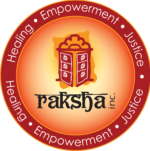November 2021
Family Court Awareness Month
The legal system can be daunting, as it is, for survivors of domestic violence to navigate on their own. In honor of Family Court Awareness Month we’d hope to shed light on the challenges that immigrant and refugee survivors face as they navigate the family court system.
The family court process can be a site of continued trauma for survivors and children. At family court, children are forced to come into contact with the abuser, which can result in continued abuse. Abusers use similar manipulations against children as against their partners. Abusers often have the skills and ability to move through the legal system with relative ease, as opposed to survivors and their children, who are further marginalized within the system. Courts employing legal abuse or refusing to listen to survivors’ stories can result in continued trauma. Many perpetrators use little or no violence gaining and maintaining control without resorting to obvious displays of abuse.
Nationally, more than 800 children have been murdered by a divorced or separating parent/caregiver in the US since 2008. 111 of those cases included rejected pleas within the family court system to intervene before the child’s death.
Domestically violent fathers/father figures are known to negatively impact on the children’s wellbeing, mental health and development. They are likely to father in ways that are authoritarian, rigid, neglectful, uninvolved and/or overly permissive, posing a high risk of perpetuating physical and emotional abuse against their children. Even if children and survivors are separated from perpetrators, it doesn’t always produce freedom or safety. Perpetrators can continue and intensify their coercive control post-separation.
In order to mitigate harm in the legal system, more education about domestic violence is needed. As they stand, professionals and systems, like family courts, often aim to maintain relationships between children and domestically violent parents, overriding children’s and survivors’ right to protection and compromising their safety. Currently, there are few states in which judges have to have even a 101 basic training in domestic violence. Ideally, people in charge of making final decisions in custody cases would have specialized training in domestic violence and family abuse dynamics. Domestic violence cases are often labeled as “high conflict” without professionals looking at why there is so much conflict and who is the source. Courts need to be trauma informed and research-led, places where children’s rights are prioritized.
According to Freyd, there are 10 steps to increase institutional courage:
- Comply with laws and go beyond mere compliance; beware risk management mindset
- Educate institutional community (especially leadership)
- Respond well to victim disclosures (& create trauma-informed reporting policy)
- Bear witness, be accountable, apologize
- Cherish the truth tellers
- Conduct scientifically-sound anonymous surveys
- Regularly engage in self-study
- Be transparent about data and policy
- Use the organization to address the societal problem
- Commit on-going resources to 1-9
Source, further resources, and reading include:
- ‘When Coercive Control Continues to Harm Children: Post-Separation Fathering, Stalking and Domestic Violence’
- Emma Katz, Anna Nikupeteri, Merja Laitinen.
- The Adverse Childhood Experiences (ACE) Study
- (CDC-Kaiser Permanente)
- Saunder’s Study (US department of Justice)
- The Meier Study: Child Custody Outcomes in Cases Involving Abuse Allegations
- The Santa Clara Law Study (Confronting the Challenge of High-Conflict Personality in Family Court)
- Bancroft ET AL., 2012; Harne, 2011; Heward-Belle, 2016; Humphreys ET AL., 2019; Mackay, 2017; Thiara and Gill, 2012
